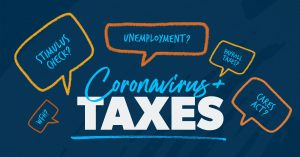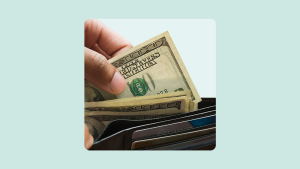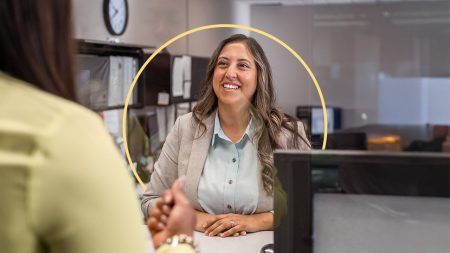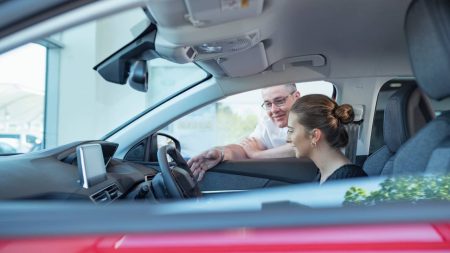Many car insurance providers do not allow you to freely spend your claim check any way you want — as nice as that would be. After you’ve filed a claim, you will generally be obligated to direct the funds toward repair costs, medical bills, debt obligations or other expenses directly related to the insurable accident. Car insurance companies enforce this by requiring another involved party, such as a mechanic or lienholder, to sign off on the check. Bankrate outlines some ways you can navigate these situations depending on who’s name is on the dotted line of your claims check.
When would you get a car insurance claim check?
If you file a car insurance claim for something that is covered within the scope of your insurance policy and settled by a claims adjuster, then you will likely get a check to cover the costs associated with your claim (minus any deductible that applies). Speaking with a licensed insurance agent can help clarify whether your accident is covered and if you’re eligible for an insurance payout.
Insurance claim check cashing can be a gray area, especially since there are not always instructions explicitly stating how the check can be used. While there are multiple ways that a claim check can be handled, it will generally be made out to the individuals primarily responsible for seeing the repairs through. In most cases, your claims check will be made out directly to you, to two parties, or to a lienholder, depending on the specifics of your situation, such as who has an insurable interest in your vehicle.
The check is made out to two parties
If the car insurance claim payment came from your insurance company, you might receive a check written out to you and the approved body shop. Auto insurers sometimes issue two-party checks to ensure that the funds are used exclusively for the intended repairs. However, the check is not always written to you and the mechanic. In some situations, such as a total loss, the check might be written out to you and your lender, known as the lienholder, and you will be expected to use the check to help pay off your auto loan.
In either case, you can determine what to do with a two-party check by checking whether the names include “and” or “or.” If “or” is present, you should be able to cash the check alone. If the names are joined with “and,” you may be expected to complete the repairs at the named body shop by signing the check over to them.
The check is made out to a lienholder
If a claim-related car insurance check was made out to you and your auto loan provider, you might be unable to access the funds from the check by yourself. Because it includes both of your names, the check will likely need to be endorsed by you and your lender. Once the check has been sent to your lender and has the appropriate signatures, it can be cashed and used to pay toward your car loan or pay it off entirely.
But what if the check was for a repair rather than a loan payoff? Here is where things can get time-consuming. You will need to get the lienholder (or leaseholder, if it is a lease) to sign the check, which could take weeks if handled by mail. The process typically follows these steps:
- Send the lienholder the check.
- Have the vehicle repaired.
- Take your vehicle to a dealership when repairs are complete and ask a representative to inspect the repair and sign off on it.
- Send the lienholder the statement from the dealer, repair bill and photos.
- Wait for the lienholder to review your documents, sign off on the check and mail it back to you.
- Cash the check and pay the repair shop when you receive it.
Can you keep a car insurance check?
Although using your full insurance check for car repairs is an obvious choice for your payout, it is not always the only option. However, determining whether you can use your payout for other purposes depends on a few factors, mostly tied to how the check is issued.
The check is from a third-party claim
Generally, you have the most flexibility when the insurance check for your car comes from another responsible party’s insurance company. For example, if you were in a not-at-fault accident and the other involved driver’s insurance issues a check to settle the claim, you may be able to independently decide how to use that money. You will probably need to show an estimate for the damages prior to receiving money from any auto insurance provider, however, so you will likely want to use those funds to fix your vehicle.
Keep in mind that if you are leasing the vehicle or have a loan, your lienholder may have stipulations for how the check can be used and may require proof that the damage was repaired. And if your vehicle was totaled and you are receiving a check for the loss, you will be responsible for paying your lender the money owed to them.
The claim check is more than the repairs
In some cases, your claim check may end up being more than the total cost of repairs needed for your vehicle. What happens with the excess funds depends on how the check is made out. Sometimes, your insurance company will require proof of repair, in which case the check may be made out to both you and the approved auto body repair shop up to the designated amount. The repair shop is generally expected to complete repairs per the allotted estimate — if there are remaining funds, the difference will usually be insignificant.
If, instead, you decide to go with an independent repair shop and the total cost of your repairs is less than the claim check made out to you, you might be able to keep the difference. However, because you cannot claim the same damage more than once, it is essential to ensure all necessary repairs have been made. If there is a difference between the claim check and repair cost, it may be worth double-checking that your vehicle has been fully repaired according to your insurer’s claim agreement.
Does my state determine what I can do with my claim check?
Every state has its own insurance regulations, including how claims are paid out. Some states, like Massachusetts, allow for direct claim payments to be made to the insured in the form of a check. This money can then be used to pay for repair work at an auto body shop of their choice. Otherwise, insurance companies often reduce claim check cashing fraud by using two-party checks made out to both the policyholder and repair shop to ensure the funds are used only to cover expenses outlined in the claim settlement. Be sure to check your state’s laws regarding insurance, or consider speaking with an agent to verify how your state handles claim payments. Your insurance carrier can provide you with clarification on your state laws on how to handle an insurance claim payout.
Frequently asked questions
-
In some cases, you may find a shop that will repair your vehicle for less than the estimate from your insurer’s preferred body shop. That said, it isn’t likely that you’ll pay less than the insurance estimate for repairs to your vehicle, as you will typically have to provide a repair estimate to your insurance company before a check is issued for the claim.
-
A two-party insurance check is a claim check that lists two different parties as recipients on the same check, typically using “and” rather than “or” to connect the two parties. Many insurance companies will issue a claim check as a two-party check to ensure that the money from the claim is used to repair the vehicle or take care of other claim-related costs. The policyholder is typically one of the listed parties, and the second party could be a lienholder, the leasing company or the auto body shop that is completing the repairs.
-
If you have a loan on your vehicle, your claim check may be written out to both you and your lienholder, especially if your vehicle was determined to be a total loss. When you have an auto loan, you do not fully own your vehicle — your bank also owns it. This means that it is unlikely you will be able to convince your insurance company to make your claim check out to you solely. The best way to ensure that claim-related car insurance checks are not made out to both you and a lienholder is to pay off your vehicle and remove the lienholder from your policy.
-
It depends. If you have a loan or lease on your vehicle, your check will likely be made out to both you and the lienholder, the leasing company or a body shop. You will likely need the second entity on the check to sign off so that you can cash it, which means you will probably be required to use it for repairs. However, if the check is made out solely to you and the damage is cosmetic — dents from a hailstorm, for example — you may be able to keep the money without repairing the vehicle. Bear in mind that you will not be able to receive insurance money for the damages in the future.
-
A vehicle is “totaled” when the cost of repairs is more than the value of the vehicle itself. In this case, you will generally receive a claim check that is relative to the market value of the vehicle right before the accident. It’s important to remember that depreciation reduces the value of your vehicle every year, so this number could be well below the original purchase price. If you still have an outstanding loan on the vehicle, the claim check will most likely be sent to the lienholder to fulfill your debt obligations that still exist for the totaled car.
-
Filing a claim is just the first step in receiving a claim check. After filing, a claims adjuster will typically investigate the damages. From there, you’ll need to reach a settlement agreement with the adjuster, which can take time depending on the complexity of the claim and the involvement of other parties. Since every situation is different, it could take anywhere from a couple of weeks to several months before you receive your claim check. Most insurance companies allow you to track the status of your claim via their website or mobile app.
Read the full article here
















